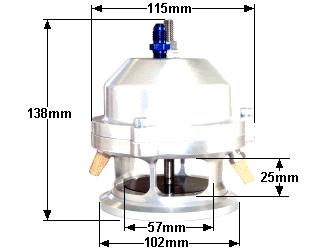Well..
A diverter valve re-directs the excess inlet air back into the inlet prior to the compressor (and after the MAF) and therefor there is no airloss, meaning that the amount of air measured by the MAF sensor is the exact amount of air passing into the engine.
A blow-off valve simply vents the excess boost air to atmosphere, ie out into the open.
SO, basically, (theoretically here, exagerated) if the engine needs 12 parts air to one fuel (or 12:1), and it thinks it is getting 24 parts air, but its actually getting 18 parts air (because it has vented some of that air to atmosphere via the BOV without knowing it), that means that it will supply 2 parts fuel, when it actually needs 1.5 parts fuel.
This means that you are getting an air/fuel ratio of 9:1, instead of the theoretically ideal 12:1, so you are getting too much fuel for the amount of air in the charge, so it's a rich charge.
A blow off valve and a diverter valve perform the same function, but in a different way. They both are there to dump the boost when the inlet shuts and allow the turbo to continue to spin, reducing lag. Either perform the job equally well, its just a case of how your engine management works. Also, Diverter valves are used on production engines because any air that has (theoretically) come into contact with fuel must pass through the catilitic converter before it reaches the atmosphere. (which is a wank in my oppinion).
Hows that?




 Reply With Quote
Reply With Quote














Bookmarks